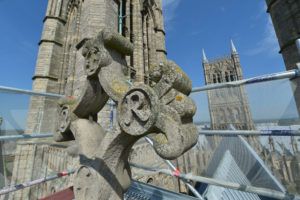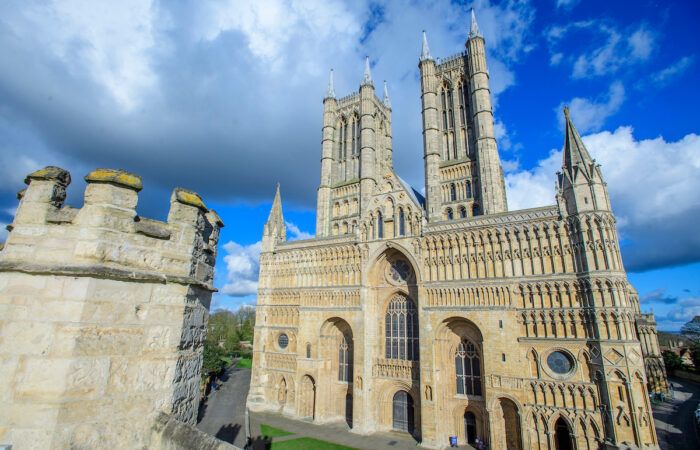Recently we shared some posts on social media inviting people to join the Fabric Fund 200 Club – one of the ways we raise vital funds to repair, conserve and maintain the Cathedral. One of these mentioned that Lincoln Cathedral is on the Heritage at Risk Register, which prompted a response asking why a ‘top-class building’ with its own dedicated architect and conservation team could be considered at risk.
So why is Lincoln Cathedral on the Heritage at Risk Register? And what does that actually mean?
The Heritage at Risk Register is managed by Historic England, and its purpose is to understand the overall state of England’s historic sites and to highlight concerns about buildings across the UK that are deemed to be at risk of being lost due to of neglect, decay or inappropriate development.
You can find out more on Historic England’s website
Unique circumstances

It is also unique in being the only Cathedral to be included in its entirety; certain features of other cathedrals make the list – the bell tower at Chichester, or monuments in the precinct of Canterbury Cathedral for example – but not the entire building.
Being included in the register does not mean the Cathedral is at risk of imminent collapse. One of the main reasons that Lincoln Cathedral is considered at risk is because of the scale of the works needed to the fabric of the building.
Even with double the current available budget it would take a 50-year work schedule to simply maintain the Cathedral in its current condition – that is without trying to improve the fabric or responding to any further deterioration.
Standing strong
Conservation as we know it today has only really existed for the last 80 or so years. Prior to this there was a tendency to replace rather than repair and the Victorians in particular are known for their heavy-handed restoration schemes; many medieval cathedrals had extensive swathes of stonework replaced by the Victorians. Thankfully, now there are many more protections in place for heritage sites in the UK and we work within strict guidelines and with an ethos of conserving and maintaining original materials as far as possible.

This means that we are in the fortunate position of having much of the original fabric of the building still intact. There are pros and cons to this. On the one hand it is the provenance of the original Norman and medieval stonework which makes Lincoln such an important monument. On the other, we now find the condition of the fabric has reached a point where it does require increased maintenance and conservation.
Despite the robust stone, much of the highly decorated masonry is high up on the building. Historically access would have been difficult and expensive – it is still not easy – so the majority of repairs were carried out at lower levels, within easy reach. Naturally the higher-level stone work is more exposed and at greater risk of weathering, and the intricate carved details also put the stone at greater risk, creating pockets where water and pollution can gather.
Which brings us to the point we find ourselves today; custodians of a unique, historically and architecturally important building. One which, despite its apparent endurance, is vulnerable and requires continual conservation work from a skilled and dedicated team to ensure that Lincoln Cathedral remains to be enjoyed by future generations.
[separator]
If you would like to support the maintenance of Lincoln Cathedral, head to our Get Involved page, to find out how you can contribute.


